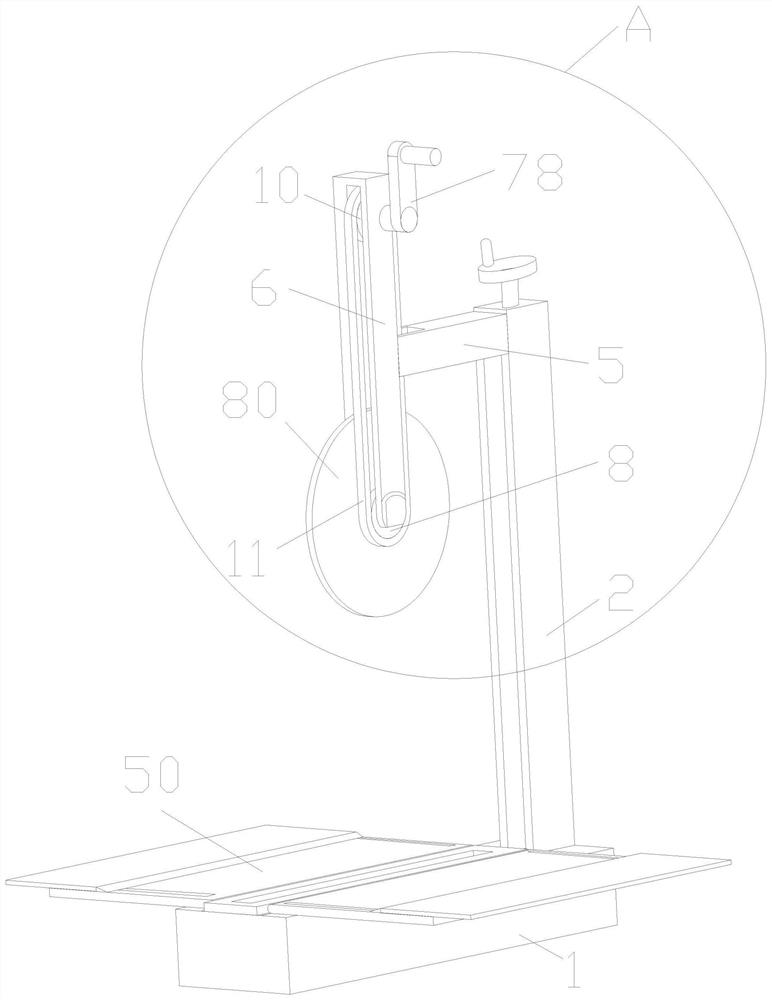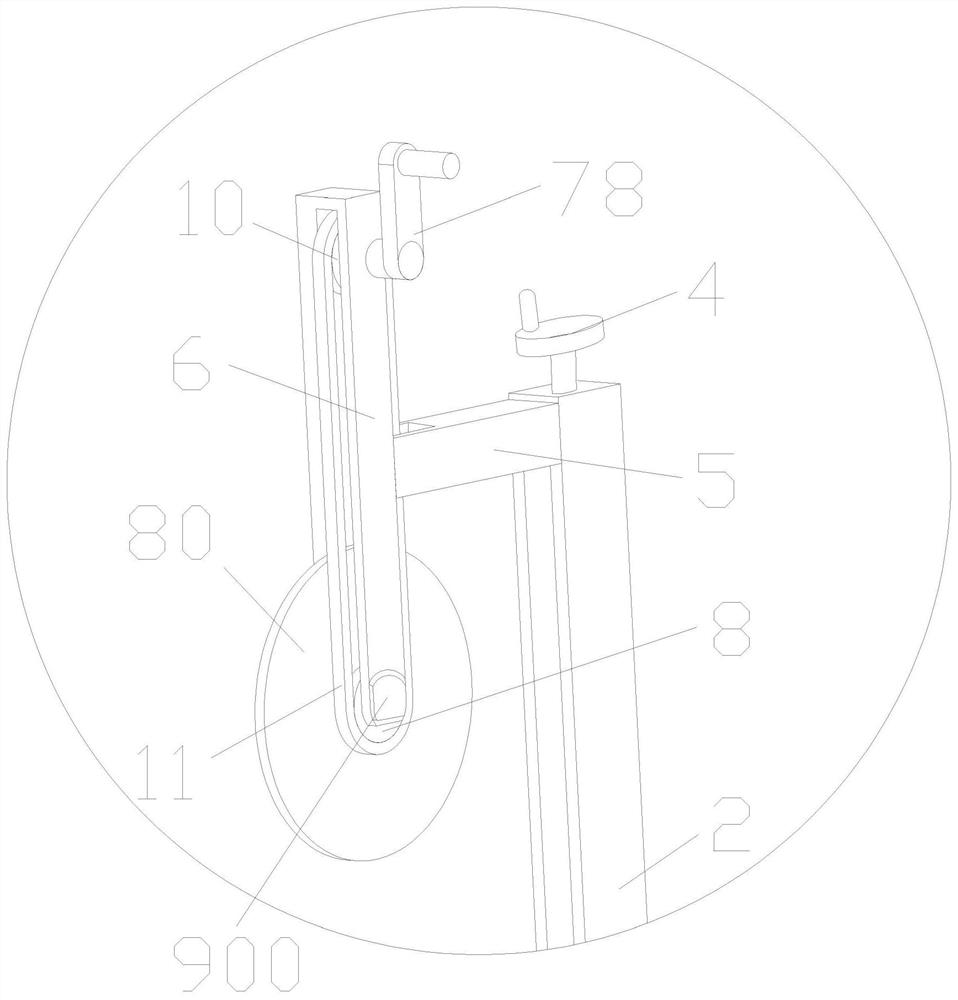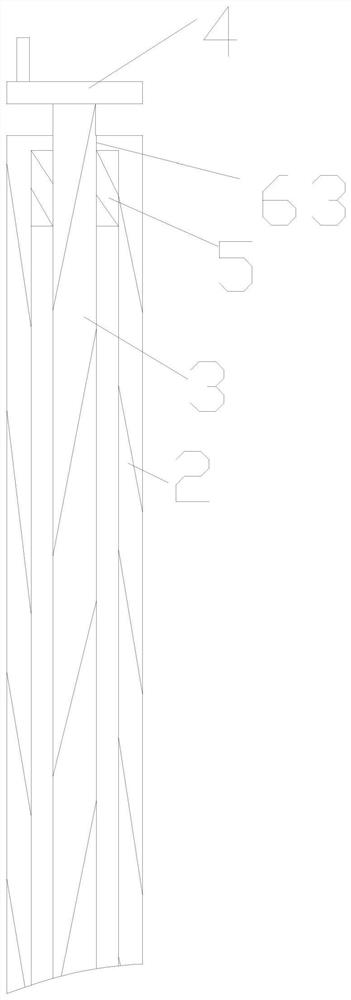Portable iron sheet cutting machine
A cutting machine and iron sheet technology, applied in metal sawing equipment, sawing machine equipment, metal processing equipment, etc., can solve the problems of large floor space, leakage of blades, and troublesome handling, so as to achieve a small floor space and avoid injury. People, easy to carry effect
- Summary
- Abstract
- Description
- Claims
- Application Information
AI Technical Summary
Problems solved by technology
Method used
Image
Examples
Embodiment Construction
[0020] Such as Figure 1-8 As shown, a portable iron sheet cutting machine, a portable iron sheet cutting machine, includes a hollow seat 1, and is characterized in that: the feeding groove on the upper side of the inner wall of the hollow seat 1, the upper end of the hollow seat 1 A column 2 is fixedly arranged, and a movable groove is arranged on one side of the column 2, and a through hole 63 is arranged on the side wall of the movable groove away from the hollow seat 1, and a side wall of the movable groove is close to the hollow seat 1. A threaded rod 3 is rotated on the side wall, and one end of the threaded rod 3 close to the through hole 63 is fixedly provided with a first rotating handle 4, and a moving plate 5 is threaded on the threaded rod 3, and the moving plate 5 is away from One end of the column 2 is fixedly provided with a bracket 6, on which a first rotating shaft is rotated, on which a circular saw blade 80 is fixedly arranged, and on the first rotating shaf...
PUM
 Login to View More
Login to View More Abstract
Description
Claims
Application Information
 Login to View More
Login to View More - R&D
- Intellectual Property
- Life Sciences
- Materials
- Tech Scout
- Unparalleled Data Quality
- Higher Quality Content
- 60% Fewer Hallucinations
Browse by: Latest US Patents, China's latest patents, Technical Efficacy Thesaurus, Application Domain, Technology Topic, Popular Technical Reports.
© 2025 PatSnap. All rights reserved.Legal|Privacy policy|Modern Slavery Act Transparency Statement|Sitemap|About US| Contact US: help@patsnap.com



